It’s remarkable how much human perception hinges on visibility. Seeing is believing, we say. Shed some light on the subject. Don’t let appearances fool you.
No surprise, then, that we usually take air quality for granted. Unless we’re enveloped in a cloud of smoke, we don’t tend to see what we’re drawing into our lungs… and what we don’t see can sometimes do severe, sustained, and insensible harm.
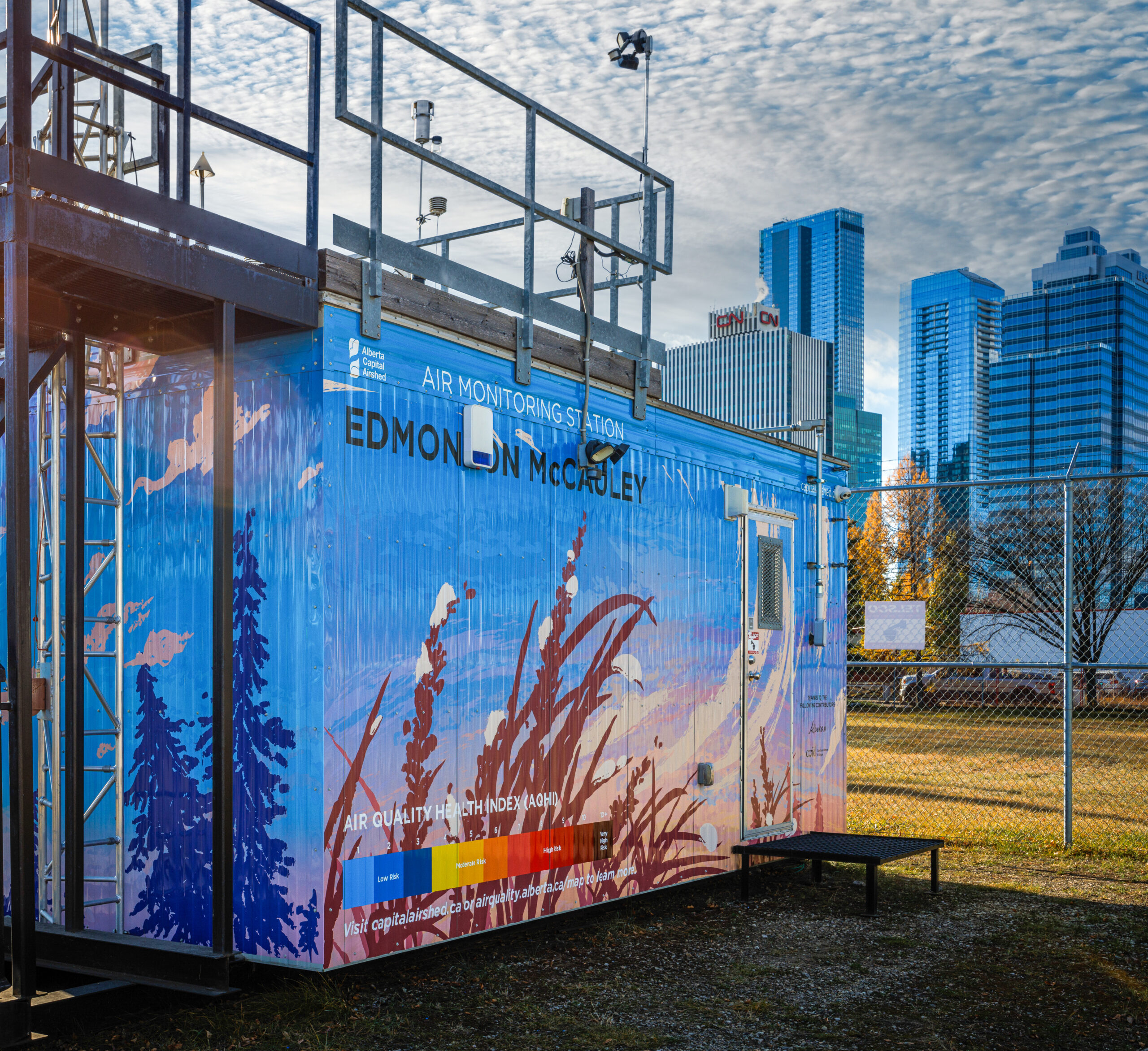
The Alberta Capital Airshed (ACA) and West Central Airshed Society (WCAS) are in the business of monitoring air quality and updating the public in real time. Their challenge is to make the invisible visible, and to help us see air quality as a concern that requires constant vigilance.
The Council’s most sophisticated tool in this effort is the Ambient Air Monitoring Station, which gathers data on three main pollutants (fine particulate matter, nitrogen dioxide and ozone) that influence the Air Quality Health Index (AQHI). These modest but sophisticated stations record vital public health data with a high degree of precision and reliability.
These are real, three-dimensional, permanent fixtures in your community, and yet: Would you know one to see one?
Probably not—these stations are built for purpose, not for panache. They look a bit like a fenced-off mobile home with no windows and a lot of antennas (which is not altogether inviting). You could walk past one every day and not realize it. In the visual landscape, despite its importance to public health, such a thing could be unfortunately (but accurately) described as “clutter.”
The ACA and WCAS understand that their continued success relies on the philosophical buy-in of the public; it is to their benefit not just to be DOING good work in the community, but to be SEEN doing it. And so, to solve a visual design problem, they turned to a group of designers familiar with challenges of visibility.
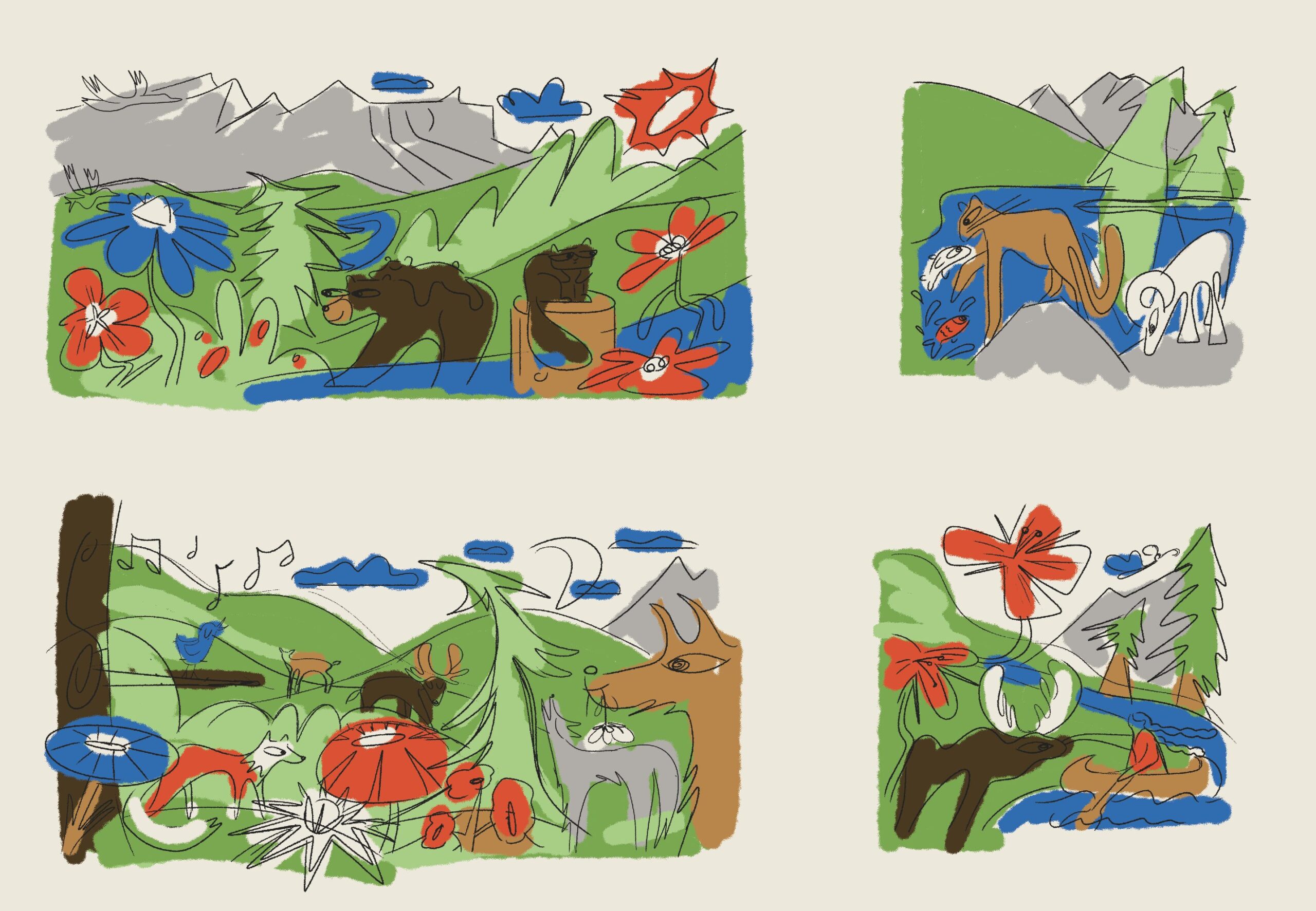
Enter Canadian Women in Design
“Women-identifying artists have been a driving force in design from the very beginning,” said Amanda Schutz, owner of Edmonton-based design shop Curio Studio. “We are, if anything, overrepresented in the corps of our industry, and yet we are massively under-represented in its popular history. So I started Canadian Women in Design as a way to shine a light on our many contributions to Canada’s visual identity.”
Neither the Airsheds nor CWID were aware of each other until Melissa Pockar of Calgary’s Moreso Projects (a communications partner of both Airsheds) saw an opportunity for a three-way collaboration.
“[Moreso has] worked with Curio Studio on a number of projects, and I knew that Amanda had been working on the CWID project for years and had connections with a lot of amazing women designers,” explained Melissa.
“My Airshed clients have a lot of vision and are eager to embrace innovative public awareness efforts, so Amanda and I wondered: What if we asked some women designers to use Airshed Monitoring Stations as big, blank canvases for original art?”
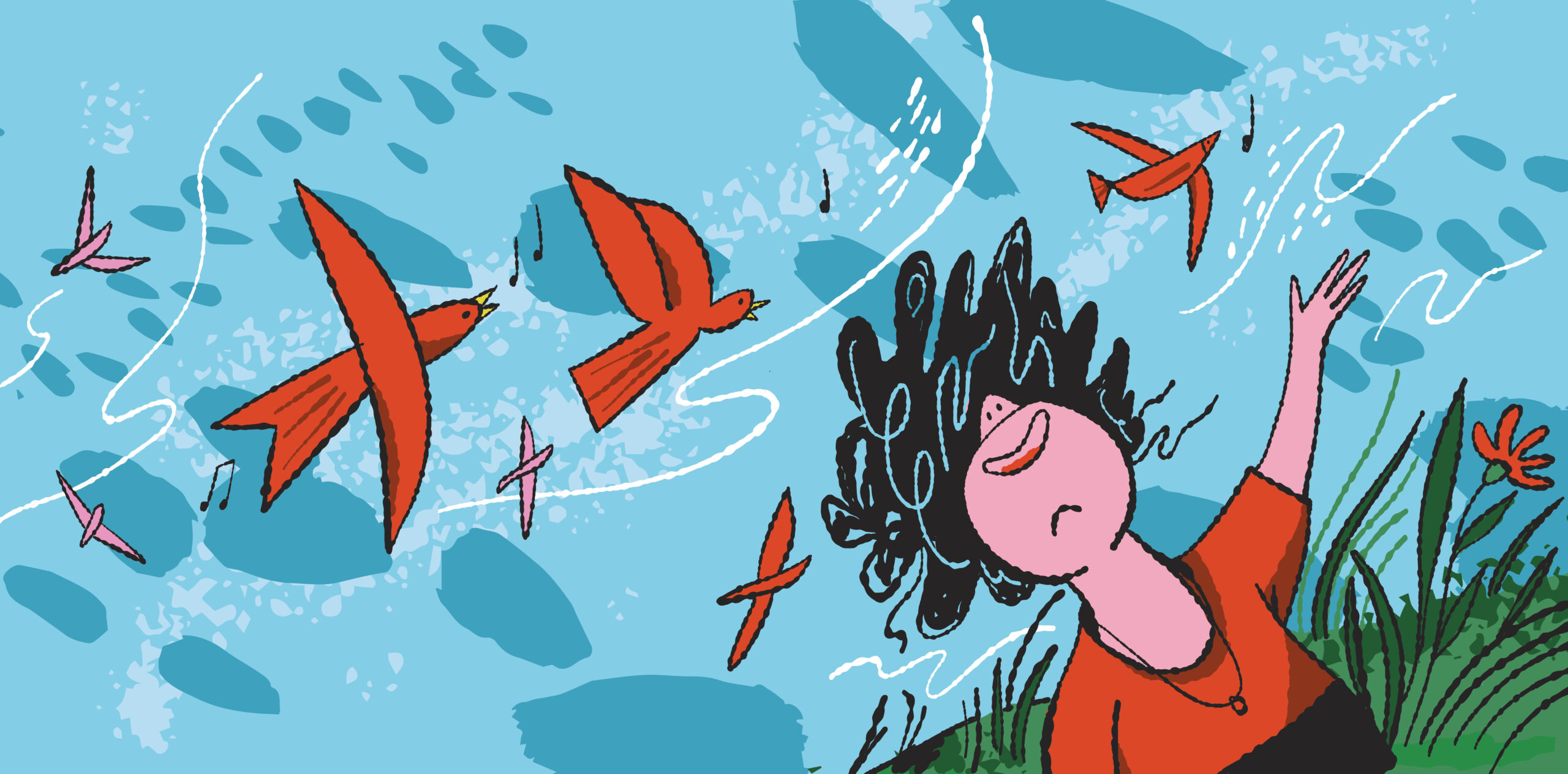
Artful Partnering
Melissa pitched the idea to her clients at ACA and WCAS, who agreed to a pilot project to wrap original artwork around five stations. With the project green-lit, Amanda tapped the shoulders of some of her favourite CWID artists, and within days, the two had matched each station with an enthusiastic and talented designer.
The first entry into the new exhibition was the Hinton Hillcrest station. Mariah Barnaby-Norris, currently a designer and illustrator at Portland’s acclaimed Oddfellows content agency, is a Hinton-native who loves creating wonky worlds filled with imperfect things and making up approachable characters.
“[Hinton is] so close to mountains, forests, trails, rivers, and lakes… it’s virtually endless. I took inspiration from the native flowers and plants of Alberta and from the wildlife that I saw while I was growing up here,” said Mariah. “I wanted my station to show an idyllic environment unaffected by climate change and air pollution.”
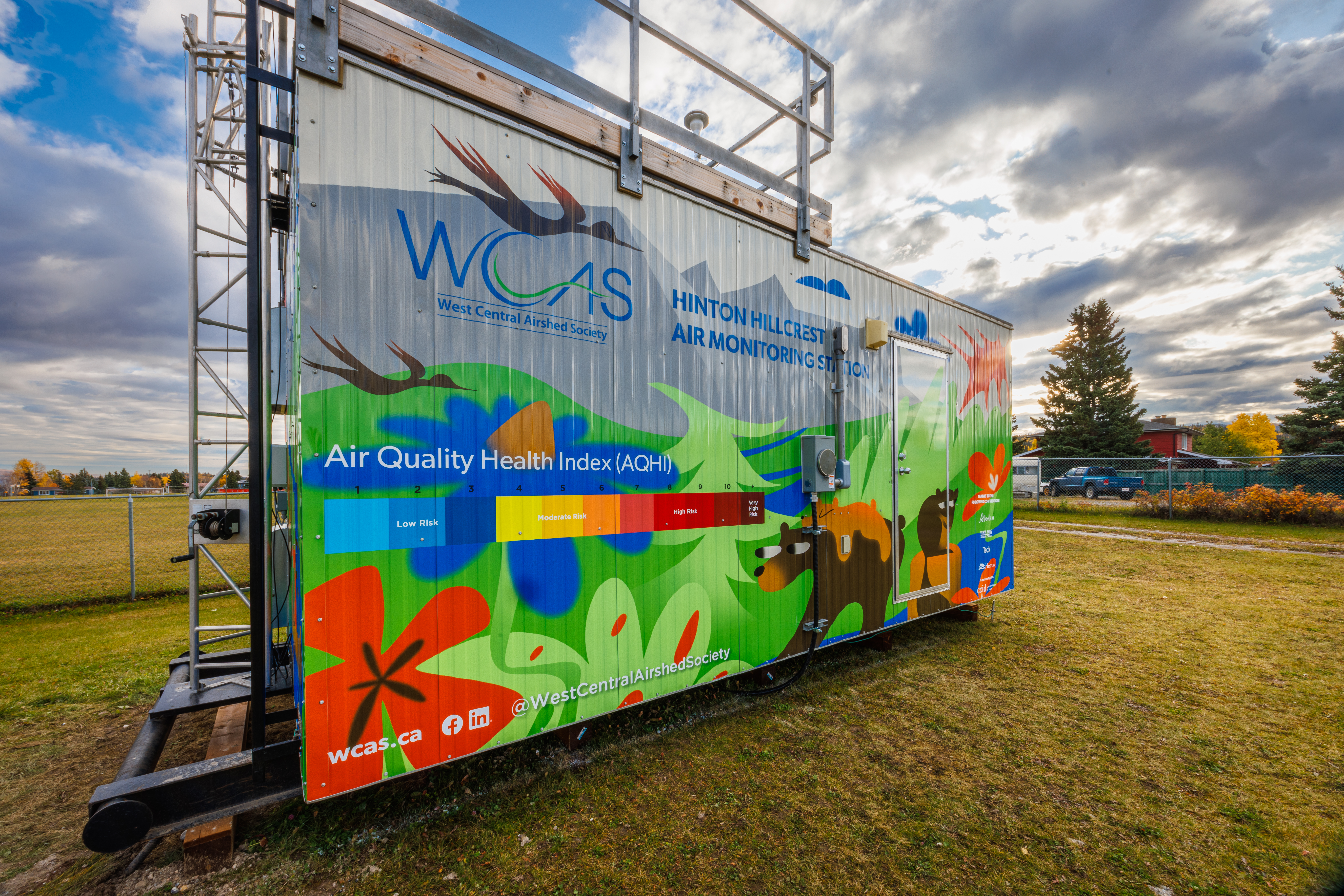
In Edmonton, artwork for the downtown McCauley station was put in the skilled hands of Painter/Illustrator Serena Tang, who describes herself as incredibly passionate about civic engagement.
“Advocating for better air quality is also connected to advocating for socioeconomic equity, because not everyone has equal access to spaces, workplaces, or environments that have better air quality,” said Serena. “Plus, I get amped up when I get to illustrate something that is tied to Edmonton.”
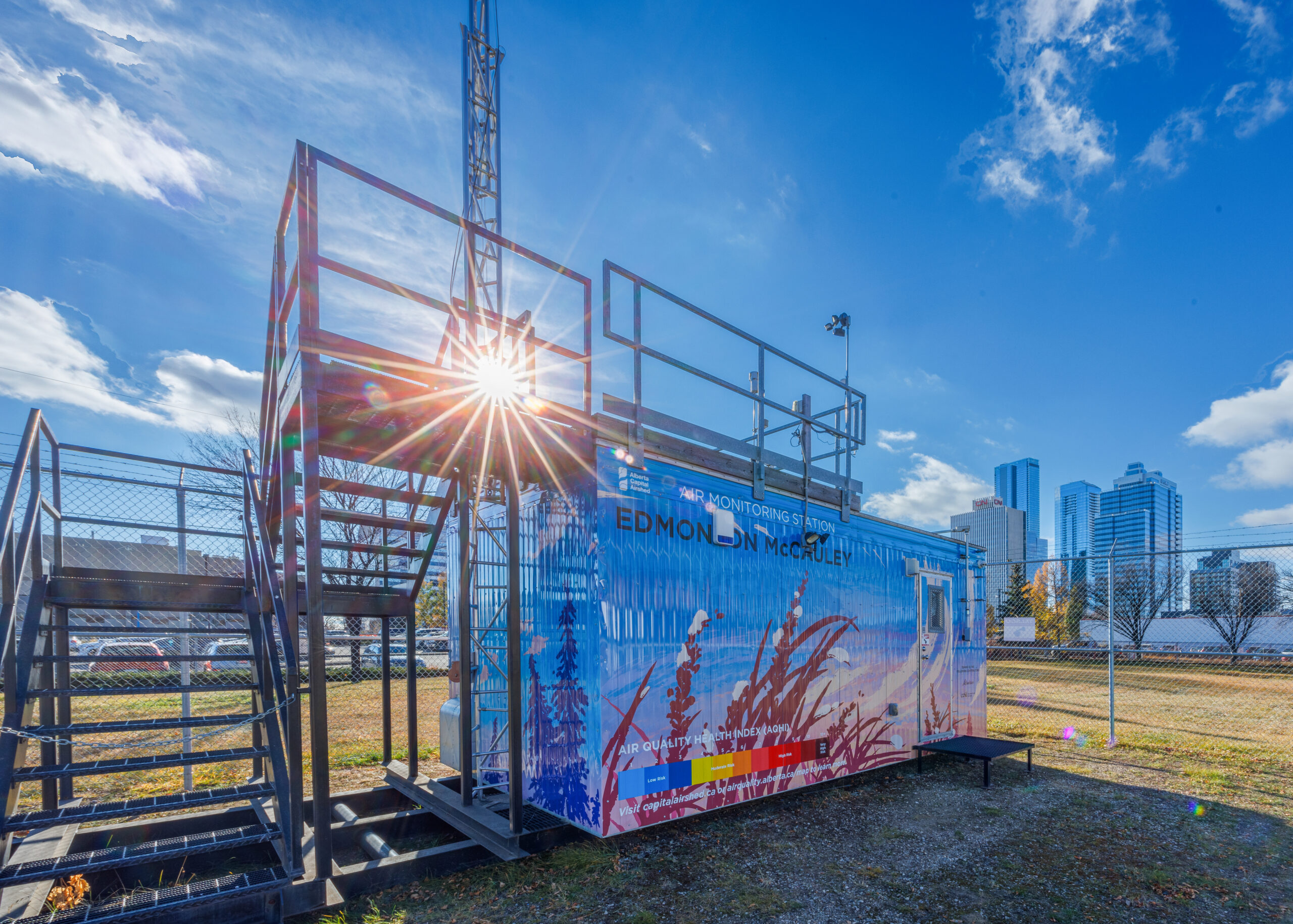
Another Edmonton transplant, French-Canadian illustrator and university design instructor Valéry Goulet, saw her installation at the Edmonton West as “a chance to demonstrate the powerful role that creative expression and communication can play in raising awareness and hopefully inspiring action.”
“I live with someone who developed asthma due to exposure to irritants, and I’ve seen others struggle with lung diseases,” said Valéry. “I wanted to highlight the importance of the human element; this is why I included an illustration of a person on the front of the station.”
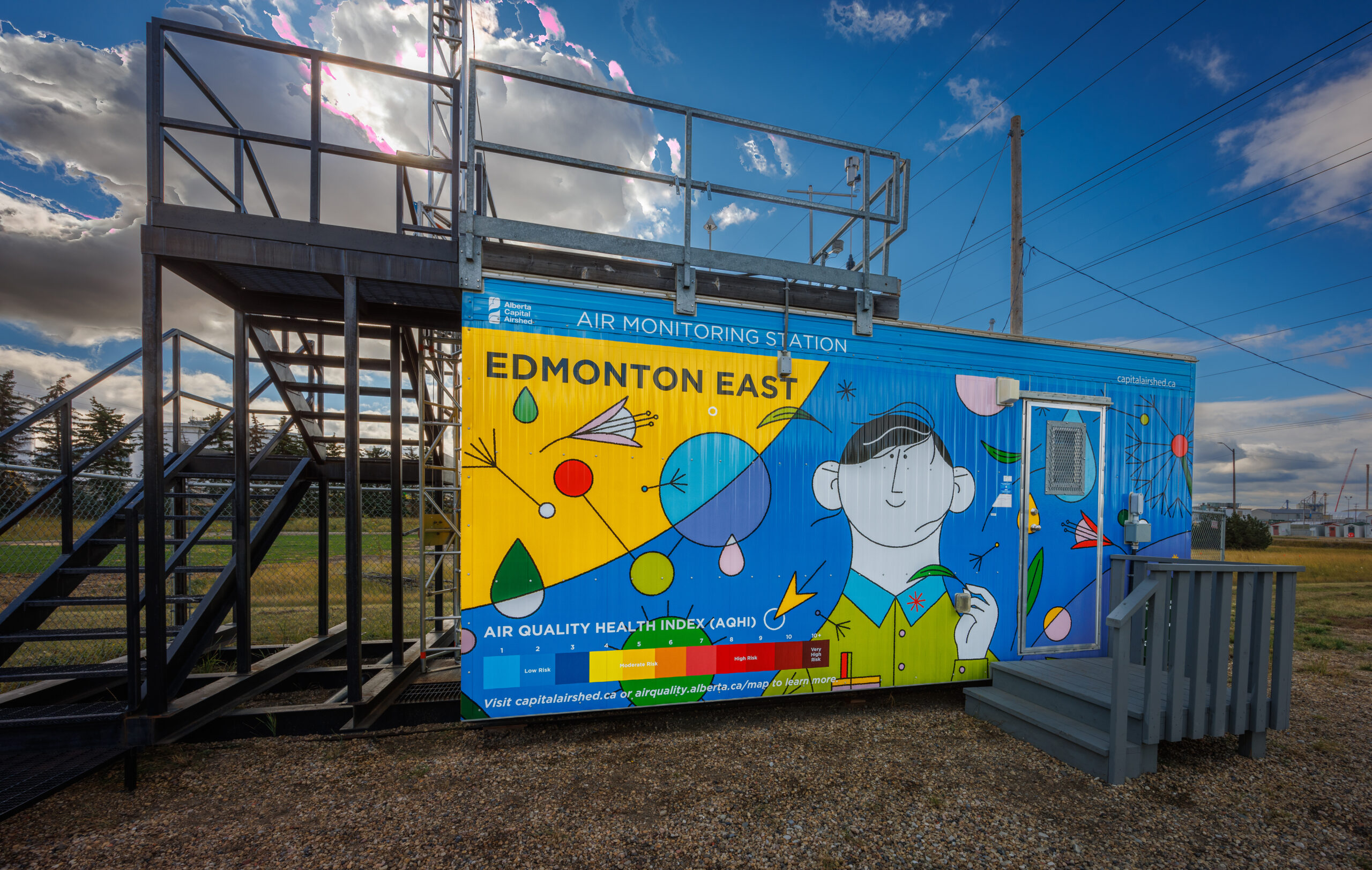
North of Edmonton, Rachel Beyer (an illustrator at Portland’s Bible Project), wrapped the St. Albert monitoring station with an illustration she said “aims to capture the simple, yet profound moments of joy found in everyday encounters with nature.”
Like Valéry, Rachel’s art was also informed by a personal health concern: “In 2022, I was diagnosed with long COVID, which seriously compromised my lung function. For me, this underscored the importance of maintaining good air quality to keep our communities healthy and thriving.”
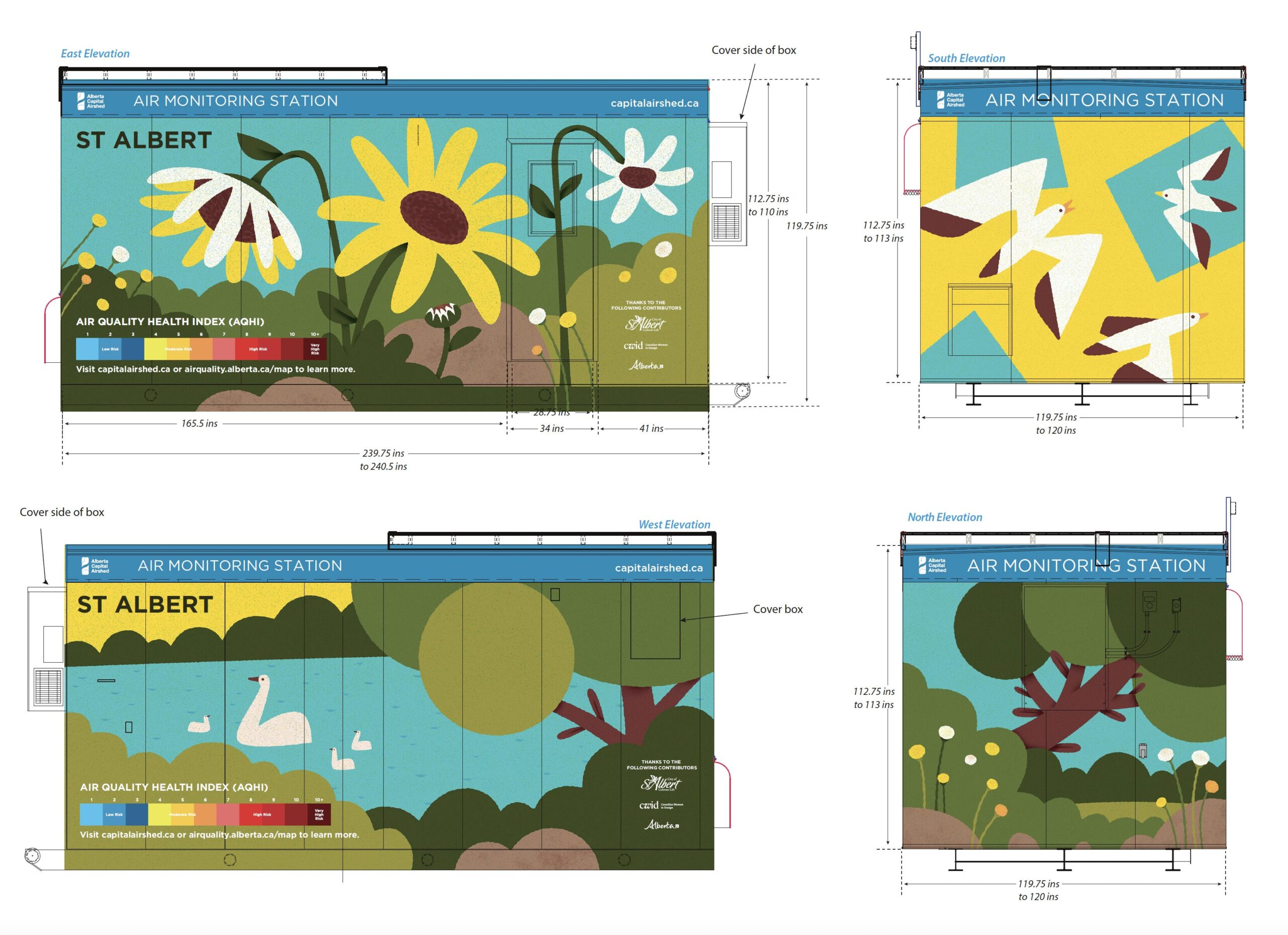
The project’s last remaining air monitoring station in Edmonton Lendrum was earmarked by the project coordinator herself; in spite of a busy year running Curio Studio, Amanda found enough pockets of time in the summer of 2024 to create a design for a purpose close to her heart.
“My mom is a double lung transplant recipient, making air quality a pretty consistent topic in our family,” said Amanda. “It’s important to advocate for a world where everyone can enjoy the outdoors safely. Also, I have been illustrating works about forest bathing lately, and the whole concept of blissing out in nature is an activity that ignites the nature conservationist in all of us.”
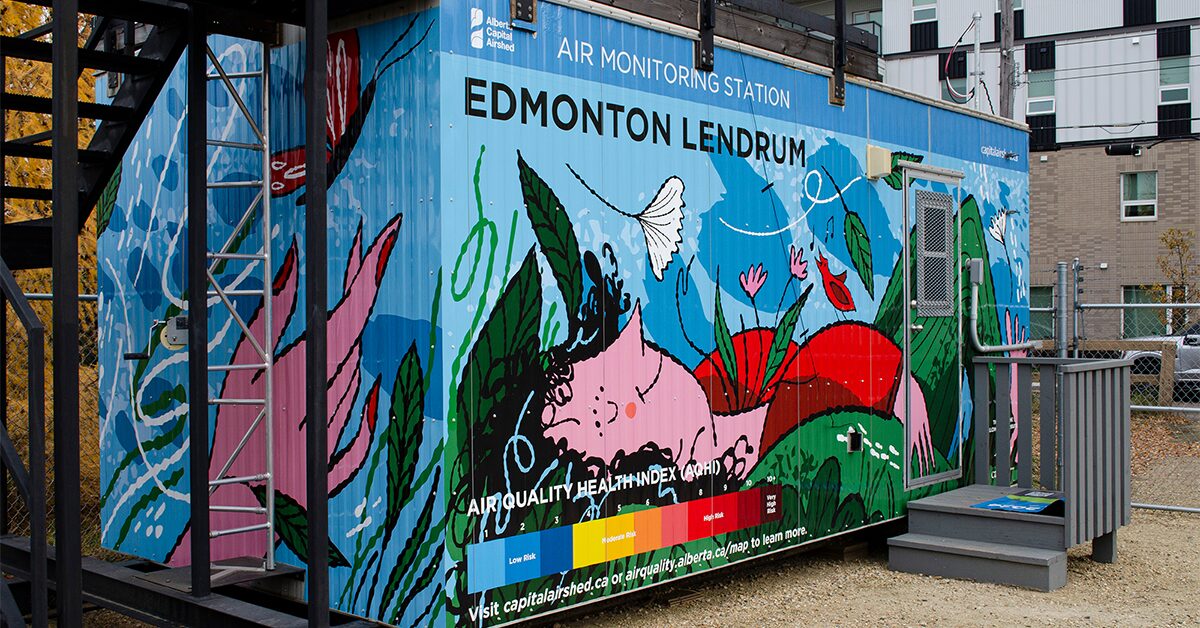
As of October 2024, three out of four installations are complete; the St. Albert location (by Rachel Beyer) will install in the spring.
While this public art is available to be appreciated by all, there are likely few who appreciate it more than Gary Redmond, Executive Director of the Alberta Capital Airshed:
“We believe that air monitoring stations can not only provide reliable air quality data, but can add beauty and inspiration to our surroundings.”
This post was last updated on December 6, 2024 by amanda